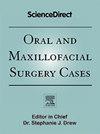在颅面纤维发育不良治疗中应用低轮廓患者特异性手术切割指南:一个病例报告和当前手术入路的回顾
Q3 Dentistry
引用次数: 0
摘要
处理颅面纤维发育不良(FD)提出了重大挑战,特别是在平衡功能和美学结果方面。传统的方法通常需要通过冠状皮瓣或面中脱手套广泛暴露,导致发病率增加和恢复时间延长。本病例报告强调了一种微创入路治疗20岁女性颧颌畸形FD。通过计算机辅助手术模拟(CASS),采用低轮廓的患者特异性重建指南,通过经结膜和口内切口进行精确的骨重建。术后影像学检查与术前计划相结合,证实了取骨的准确性。患者获得了令人满意的面部对称,发病率降低。该方法表明,将CASS与低轮廓患者特异性重轮廓指南相结合可以优化复杂颅面FD病例的预后。进一步的研究和比较研究是必要的,以充分评估该技术在外科治疗FD和其他良性颅面病变中的长期效益。本文章由计算机程序翻译,如有差异,请以英文原文为准。
Application of low-profile patient-specific surgical cutting guides in the management of craniofacial fibrous dysplasia: A case report and review of current surgical approaches
Managing craniofacial fibrous dysplasia (FD) poses significant challenges, particularly in balancing functional and aesthetic outcomes. Traditional approaches often require broad exposure through coronal flaps or midfacial degloving, leading to increased morbidity and extended recovery. This case report highlights a minimally invasive approach for a 20-year-old female with disfiguring zygomaticomaxillary FD. Through computer-aided surgical simulation (CASS), low-profile patient-specific recontouring guides were employed to perform precise bone recontouring through transconjunctival and intraoral incisions. Postoperative imaging confirmed accurate bone removal when superimposed with the preoperative plan. The patient achieved satisfactory facial symmetry with reduced morbidity. This approach demonstrates that combining CASS with low-profile patient specific recontouring guides can optimize outcomes for complex craniofacial FD cases. Further research and comparative studies are necessary to fully assess the long-term benefits of this technique in surgical managing FD and other benign craniofacial lesions.
求助全文
通过发布文献求助,成功后即可免费获取论文全文。
去求助
来源期刊

Oral and Maxillofacial Surgery Cases
Medicine-Otorhinolaryngology
CiteScore
0.60
自引率
0.00%
发文量
43
审稿时长
69 days
期刊介绍:
Oral and Maxillofacial Surgery Cases is a surgical journal dedicated to publishing case reports and case series only which must be original, educational, rare conditions or findings, or clinically interesting to an international audience of surgeons and clinicians. Case series can be prospective or retrospective and examine the outcomes of management or mechanisms in more than one patient. Case reports may include new or modified methodology and treatment, uncommon findings, and mechanisms. All case reports and case series will be peer reviewed for acceptance for publication in the Journal.
 求助内容:
求助内容: 应助结果提醒方式:
应助结果提醒方式:


